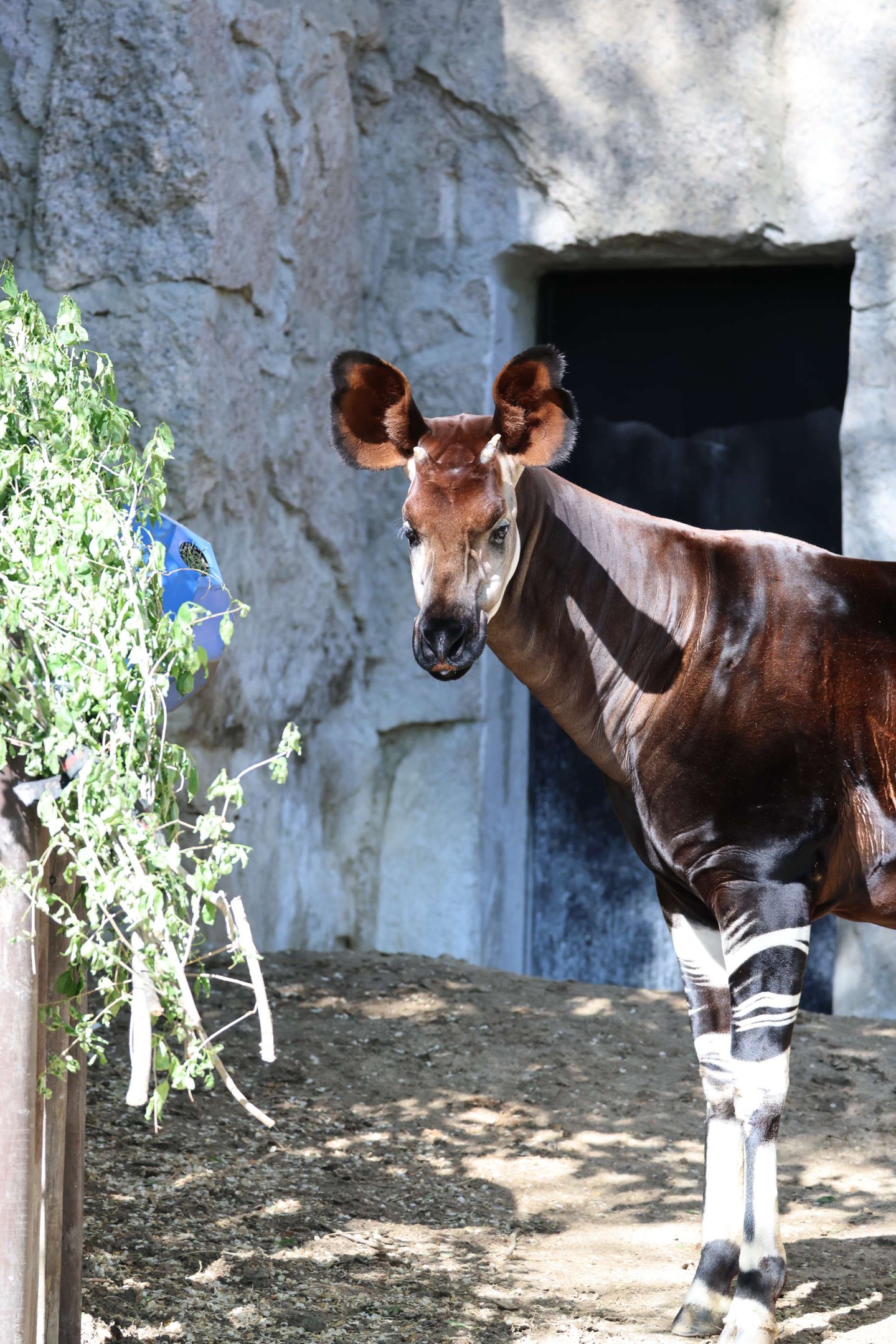- Introduction to Cheyenne Mountain Zoo’s Okapi, Bahati, and his new environment.
- Key considerations in zoo animal management and relocation.
- The adaptive behavior and welfare benefits of environmental enrichment.
- The social dynamics and integration of new animal roommates.
- The role of zoos in wildlife conservation and public education.
In May, Cheyenne Mountain Zoo’s beloved Okapi, a 12-year-old named Bahati, embarked on a new chapter with a change in habitat and companionship. With such transitions, it is crucial to understand the dynamics involved in animal relocation, particularly for species like the okapi, a curious and reclusive creature native to the dense forests of the Democratic Republic of Congo.
Bahati’s initial move into the tapir yard was designed with strategic intent. Allowing him to explore the entirety of the space alone ensured he could familiarize himself without the pressures of immediate social interaction. This approach underscores a core principle in zoo management: transitioning animals in a way that minimizes stress and maximizes adjustment opportunities.
The staff’s preparation of Bahati’s new environment included planting a willow tree and strategically placing tree branches. These environmental enrichments contribute to an engaging habitat that stimulates natural behaviors. Such practices are instrumental in maintaining the psychological and physical health of zoo animals. For an okapi, whose natural inclination is to forage and seek shelter among the foliage, these additions simulate their native setting, promoting well-being and reducing signs of stress.
Over the course of the day, Bahati’s exploration helped him claim this territory. Zoo professionals carefully monitor such behaviors to gauge the success of habitat modifications. The introduction of new sounds and smells, such as the presence of Mochi, the tapir, is an important aspect of enriching the animal’s life. While initial curiosity is expected, it also paves the way for more complex social interactions that are critical for the animal’s social structure.
Understanding these social dynamics in animal management is vital. Integrating animals into shared spaces requires careful planning, as it impacts not only individual welfare but also the social fabric of the zoo community. The choice to introduce Bahati to Mochi highlights the importance of species compatibility and the potential for cross-species enrichment. Such practices can enhance quality of life and provide indirect educational opportunities for visitors.
Beyond the direct care of animals, zoos like Cheyenne Mountain Zoo play a pivotal role in wildlife conservation and public learning. By providing environments that closely mimic natural habitats and encouraging natural behavior, zoos effectively foster conservation awareness. As visitors engage with well-cared-for animals like Bahati, they gain a greater appreciation for species conservation efforts.
In essence, managing animal relocations within a zoo setting involves a blend of scientific understanding and practical application. Through thoughtful practices and dedication, zoos contribute considerably to the conservation landscape while offering educational experiences that resonate with the public.
*****
Source Description
In May, Cheyenne Mountain Zoo’s 12-year-old okapi, Bahati [buh-HAH-tee], got a new home – and a new roommate – in CMZoo’s tapir yard.
For his first day in the tapir yard, Bahati got the entire space. His care team wanted him to explore, make his mark and have maximum space to settle in. He did incredibly well, and his team set him up for success by planting a new willow tree and hanging lots of tree branches throughout the yard, which kept him engaged throughout the day.
By the end of the day, Bahati had explored nearly everything to his heart’s content. But, one new sound and smell particularly caught his curiosity. Bahati wanted to see Mochi.
Read more by clicking the link in our bio ➡️ “Newsletter: The Waterhole | May 2025”


